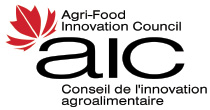Gender Equality Mainstreaming Digest – November 2020 Issue
Here are the highlights of this month’s Gender Equality Mainstreaming Digest! Click HERE for the full version.

Fresh snow on Mountain Ash/Rowan [Sorbus aucuparia] berries. Photo courtesy of D. Ceplis.
Highlights:
Opportunities and Upcoming Events:
Many events are being cancelled or re-scheduled at the last minute due to the COVID-19 pandemic. Please check each organization’s website or its social media site for up to date information.
Women Entrepreneurship Knowledge Hub (WEKH) invites you to participate in a free 90-minute virtual event on Nov. 4th focused on women in ag entrepreneurship in the prairie provinces.
The driving force for this event came from the publication of a report by the Saskatchewan regional WEKH hub at the Hill and Levene Schools of Business at the University of Regina, in collaboration with the central WEKH hub at Ryerson University. The findings from this report highlight the many challenges women entrepreneurs in Saskatchewan face in agriculture, stemming from structural issues of power and inequality and, in particular, the continued construction of ag as a male dominated industry. The report also revealed a number of opportunities and outlined several recommendations to continue the advancement of women in ag entrepreneurship.
We look forward to sharing the findings and recommendations contained in this report that is both meaningful and impactful, so we can create a plan of action that has the potential to disrupt this space and open up more opportunities for women entrepreneurs in the ag industry across Canada.
Virtual Advancing Women in Ag Conference
Registration is now open for the virtual Advancing Women in Ag Conference on November 24 and 25, 2020. You get two days of virtual presentations from over 35 speakers and the chance to connect with other women in ag during the conference.
- Connect with like-minded women passionate about agriculture and food.
- Grow from informative, inspiring and motivating discussions with influential leaders.
- Learn the tools and techniques that will empower you to live to your full potential.
Speakers include Dr. Erin Armstrong with the Barley Council of Canada, three ag media journalists (Lisa Guenther, Editor of Canadian Cattlemen, Laura Rance, Vice President of Content at Glacier FarmMedia, and Karen Briere, Reporter at The Western Producer), and Dr. Sylvain Charlebois from Dalhousie University.
Digital Agriculture Career Panel
This online event from Ag in the Classroom will provide students the opportunity to learn more about the exciting technology careers available in the agriculture sector from those who are currently working in Digital Agriculture (STEM-related field). Four panelists will answer questions in real-time or in advance. Date: Tuesday, November 3
This Month’s News:
The Nobel Prizes Awarded to Women 2020
The Nobel Prize in Chemistry 2020 was awarded jointly to Emmanuelle Charpentier and Jennifer A. Doudna “for the development of a method for genome editing.” Emmanuelle Charpentier and Jennifer A. Doudna have discovered one of gene technology’s sharpest tools: the CRISPR/Cas9 genetic scissors. Using these, researchers can change the DNA of animals, plants and microorganisms with extremely high precision. This technology has had a revolutionary impact on the life sciences, is contributing to new cancer therapies and may make the dream of curing inherited diseases come true.
The Royal Swedish Academy of Sciences has decided to award the Nobel Prize in Physics 2020 with one half to Roger Penrose “for the discovery that black hole formation is a robust prediction of the general theory of relativity” and the other half jointly to Reinhard Genzel and Andrea Ghez “for the discovery of a supermassive compact object at the centre of our galaxy”.
The Nobel Prize and Prize in Economic Sciences have been awarded to women 57 times between 1901 and 2020. Only one woman, Marie Curie, has been honoured twice, with the 1903 Nobel Prize in Physics and the 1911 Nobel Prize in Chemistry. This means that 56 women in total have been awarded the Nobel Prize between 1901 and 2020.
CRIAW’s Statement Regarding Speech from the Throne
October 14, 2020. The Canadian Research Institute for the Advancement of Women (CRIAW-ICREF) wishes to acknowledge the important announcements that address women’s inequality in Canada in the 2020 Speech from the Throne.
Women have been disproportionately impacted by the economic downturn caused by this pandemic. Although these issues are not new, these underlying experiences of inequality have been exacerbated during COVID-19. Low wages and increased precarious employment in women-majority fields like the care sector, the retail and service sector, and the not-for-profit sector—have a significant impact on women generally, but a particularly disproportionate impact on immigrant women, racialized women, single mothers, Indigenous women, women with disabilities, and senior women—women facing multiple intersecting inequalities.
We are encouraged to hear about the commitments to build a system for high-quality childcare and early learning and share the optimism and analysis of Child Care Now. We are also very encouraged to hear that there is a new commitment to address women’s economic inequality through the creation of a taskforce on Women in the Economy. A thorough and intersectional plan is crucial for the advancement of all women in Canada post COVID-19.
Alberta combine crew ruled by women
At C.G. Paulgaard Farms, the women run the combines during harvest. When they do, things tend to run fairly smoothly on the 15,000-acre crop and livestock operation, according to Joanne Paulgaard, who runs the operation along with her husband, Rod, children Kyle and Shelby and Rod’s mother, Norma. An operation their size requires a crew of 15 to 18 people, depending on the season, but it is the five women on the team who get the most time on the combines. The family farm is near Hayter, Alta., between Provost, Alta., and Macklin, Sask. It has about nine year-round employees and hires additional people for the busier times. Quality, not gender, drives their hiring process.
A German research institute is being accused of sexism over the dress code
A polar research institute in Germany has been accused of sexism after asking scientists and journalists onboard one of its ships to avoid wearing revealing or tight-fitting clothing, such as leggings and crop tops – items primarily worn by women.
Chelsea Harvey was one of the journalists on the mission to the Arctic last September. She says the reason given for the introduction of the dress code was a “safety issue” – apparently there were a lot of men onboard the ship, who had “not seen land for many months”.
The Alfred Wegener Institute for Polar and Marine Research who were leading the exhibition said they do not tolerate sexual harassment, misconduct and discrimination. They said the regulations were imposed to ensure people adhered to hygiene and safety standards.
Reports Publications and Resources:
The World’s Women 2020: Trends and Statistics
What is the state of gender equality in the world? What do data tell us about progress towards the commitments made in the Beijing Platform for Action, which, 25 years after its adoption, remains the most comprehensive road map for advancing women’s rights worldwide.
The World’s Women 2020 is a collection of 100 stories providing up-to-date assessments of progress towards gender equality in six critical areas.
For example, in the thematic area of Economic Empowerment:
“In certain areas, gender-based occupational segregation reflects the difference between women and men in terms of their paths in education and vocational training, including in the fields of science, technology, engineering and math (STEM). High-skilled occupations in ICT, science and engineering were mostly occupied by men and women’s representation remained minimal. As of 2019, only one in five ICT professionals were women and they represented only 28% of science and engineering professionals (see figure III).”
Architecture for Gender Transformative Programming and Measurement: A Primer
This short ‘primer’ introduces Plan International Canada’s (CNO) architecture for gender transformative programming and measurement. The architecture consists of three useful tools:
1) A rights-based theory of change
Transformative change requires a rights-based approach which recognises that the realisation of rights is the ultimate goal of development programming that leads to the achievement of other development outcomes such as education, health, economic empowerment etc. In order to embed this approach across their programming, CNO use a framework for project design that places the rights of women and girls, and the agency and empowerment required to realize those rights as a central objective in and of itself as well as a pathway for attaining thematic outcomes. To achieve this, they have developed a standardized logic model (LM) stream to be applied to all their projects.
2) A women and girls empowerment index (WGEI)
The WGEI measures changes directly associated with the root causes of gender inequality across five gender equality domains which are built into the Ranking Tool described in point three. These are: roles and responsibilities, resource access and control, participation and decision making, social norms, institutional change.
3) Gender equality scoring
The Scoring Tool assesses and ranks projects based on three specific areas: Project Design. This area examines the architecture of the project, based on the documents submitted at the design phase of development, as well the same design components at subsequent stages of implementation. Gender Equality Analysis Domains. This area assesses in detail the breadth and intensity of the change expected in the five domains used for gender analysis (see table to the right). Resources for gender equality programming. This area looks at how gender equality technical inputs and oversight have been included in the budget and staffing of the project.
